
With elements of other found-footage horror movies including Paranormal Activity and “prove it” films which challenge the supernatural such as Room 1408, The Possession of Michael King presents director David Jung’s unique vision of the modern fright film.
Beginning with Jung’s urge to direct his own written work, The Possession of Michael King came together as a personal spec project. “A friend of mine and I have both been writers for a number of years,” Jung said. “We were tired of them sitting on the shelf of a studio for so long. We made a pact to write and direct horror movies – we’ll shoot them in our basement if we have to; we are going to manifest these things. I specifically targeted The Possession of Michael King for me as a director.”
With his plans in place, Jung conjured a new strand of scary project for himself. “I had an idea of a movie – a horror twist of Memento,” he explained. “A guy wakes up in an alley way covered in blood – not his blood. This demon has been toying with him. The demon inside him is able to erupt and kills everyone around him, and it wipes his mind clean and leaves him as he started. I pitched it to a friend.”
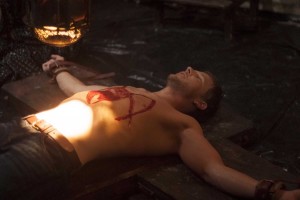
However, Jung’s friend only liked one element of the pitch which he instructed Jung to retain. “He said, ‘This thing that is really interesting about that is that this guy did this to himself somehow,’” Jung noted. “That became the genesis of the idea of creating this character Michael King. I’ve always loved the movie The Shining and thought it would be cool to do the Jack Torrance story from the point-of-view of Jack Torrance. What would it be like to be the person who is going mad?”
Another key element for Jung was the factor of organized religion and its position on the supernatural. “I’ve always had a bone to pick with religion – socially and politically – looking at what’s happening in the world around us. All of the big wars throughout history stem from religious beliefs.”
With the longtime credo for screenwriters to “write what you know,” Jung moved forward for additional elements. “I put that to heart and used that to formulate this character whose wife is spiritual, but he is not,” the writer-director stated. “What if it was this religious advice that led to her demise? His wife has been going to a psychic, and she’s using her spiritual advice to guide her, and it interferes with her life. Spiritualism and religion influences millions of people’s lives every day.”
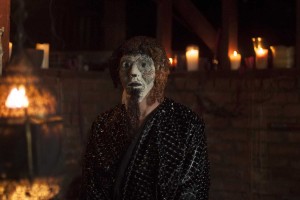 Delving further into his script, Jung ventured into the history of various supernatural phenomena and its effects. “I’m a research-intensive person and am a big history buff,” he said. “I did a lot of research on all of the rituals. There’s a few scenes that didn’t make it into the finished cut of the film where we are learning about these rituals. The pentagram is a symbol for protection. It’s actually not evil. I found some old manuscripts from overseas. I found some crazy rituals for necromancy and demon summoning. I used it in the movie while giving it a slight modern interpretation. I had a lot of fun with that stuff. I felt that was something that hadn’t been explored in possession-themed films in a long time. We haven’t seen these other types of rituals in modern cinema. It’s always just a family who randomly become possessed with some demon. I had a lot of fun with Michael with my own cynicism towards these spells and the nature of them going into this world.
Delving further into his script, Jung ventured into the history of various supernatural phenomena and its effects. “I’m a research-intensive person and am a big history buff,” he said. “I did a lot of research on all of the rituals. There’s a few scenes that didn’t make it into the finished cut of the film where we are learning about these rituals. The pentagram is a symbol for protection. It’s actually not evil. I found some old manuscripts from overseas. I found some crazy rituals for necromancy and demon summoning. I used it in the movie while giving it a slight modern interpretation. I had a lot of fun with that stuff. I felt that was something that hadn’t been explored in possession-themed films in a long time. We haven’t seen these other types of rituals in modern cinema. It’s always just a family who randomly become possessed with some demon. I had a lot of fun with Michael with my own cynicism towards these spells and the nature of them going into this world.
With a wealth of research added to his basic storyline and thematic elements, Jung was able to manifest a script which he felt would serve as the appropriate springboard for his film. “I feel like that’s when your best stuff happens as a writer,” Jung remarked about bringing all of his material together in the script. “I’m very passionate about these elements.”
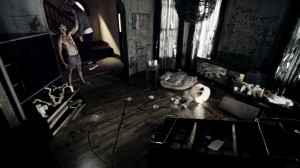 As the story begins, King’s wife has passed, leaving him a widower with a young child at home. The character sets about to create a documentary film in which he is looking for actual evidence of supernatural entities. Spoken directly to the camera, King unabashedly beckons god or the devil to prove their existence. “It’s the showdown,” Jung commented about the pivotal scene. “What kind of a guy could do this who has a young child? My real world logic would dictate to me I don’t have any fear of doing this stuff. In movie logic: it’s definitely real. I didn’t really think about the implications of it when I was writing it, but when I was casting the film, that piece of dialogue made actors uncomfortable. Challenging god and the devil – to go outright and spit it out there, it’s slightly difficult. ‘For the first time, I thought about it,’ Shane Johnson,who played Michael, said to me, ‘sitting in a dark room and challenging the devil.’”
As the story begins, King’s wife has passed, leaving him a widower with a young child at home. The character sets about to create a documentary film in which he is looking for actual evidence of supernatural entities. Spoken directly to the camera, King unabashedly beckons god or the devil to prove their existence. “It’s the showdown,” Jung commented about the pivotal scene. “What kind of a guy could do this who has a young child? My real world logic would dictate to me I don’t have any fear of doing this stuff. In movie logic: it’s definitely real. I didn’t really think about the implications of it when I was writing it, but when I was casting the film, that piece of dialogue made actors uncomfortable. Challenging god and the devil – to go outright and spit it out there, it’s slightly difficult. ‘For the first time, I thought about it,’ Shane Johnson,who played Michael, said to me, ‘sitting in a dark room and challenging the devil.’”
Through the beginning of the film, the first key realization for the Michael King character that he has tapped into inexplicable otherworldly realities is when he is hypnotized and unwittingly draws a sketch of a demon that is known to certain paranormal investigators and demon experts. “I wanted it to be underplayed,” Jung noted of his script’s breakthrough point. “Cast and crew would ask what was the spell that actually worked. I wanted that to be kitchen sink logic. The moment that he opened the door and invited something in, come and get me, a bump happens right after that. All it takes to invite something like this in, is sitting there and opening yourself up to the force. Right after that moment, when very subtle things start happening, you can trace them. He goes to the demonologist and draws the picture of the demon. There’s a really quick Easter Egg flash in the basement. I wanted it to be more of a psychological slow burn on him. How would something like this really manifest in the eyes of a man really going mad?”
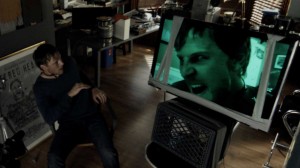 When King has unearthed powerful demonic forces into his home and person, he makes a conscious decision in the script to excise such happenings from his world. “He comes to his senses and is going down this road, knows something’s happening, and sits down in front of that television, and needs to confront whatever’s happening to him,” Jung explained. “That moment where his image on the screen turns to him: I’ve gone too far, I never should have opened Pandora’s box, and the movie roller coasters straight down. He tries everything to escape it. He goes back to all of these people he was laughing at. They warned him about this stuff. The priest even said to him, ‘Don’t go down this road. Don’t answer this.’ When you open that door, you are never going to be able to close it. Nobody else wants to get involved in that because they know the implications. He was the boy who cried wolf.”
When King has unearthed powerful demonic forces into his home and person, he makes a conscious decision in the script to excise such happenings from his world. “He comes to his senses and is going down this road, knows something’s happening, and sits down in front of that television, and needs to confront whatever’s happening to him,” Jung explained. “That moment where his image on the screen turns to him: I’ve gone too far, I never should have opened Pandora’s box, and the movie roller coasters straight down. He tries everything to escape it. He goes back to all of these people he was laughing at. They warned him about this stuff. The priest even said to him, ‘Don’t go down this road. Don’t answer this.’ When you open that door, you are never going to be able to close it. Nobody else wants to get involved in that because they know the implications. He was the boy who cried wolf.”
Keeping in mind that Jung wanted to direct the project, he knew that the production values would have to be simplified. “I wrote the script as a doc-style film,” he said. “I thought it would be the easiest if I had no money to make it – having it look bad and getting away with it. Nobody stepped up to finance it though I had a lot of traction on the script. One wanted me to re-write the script and shoot it traditional cinematic style and they would give me $500,000 to make it. Can I make this movie and shoot it as a traditional film for $500,000? It’s not just a haunted house movie. At that time, The Devil Inside came out and did really well. Immediately, I had five studio offers on my original script with a much larger budget – $1.3 million. It was a- no brainer. I went back to do the movie the way I was originally going to shoot it.”
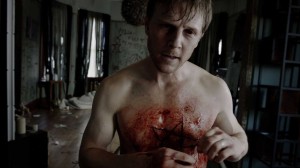 When Jung went to shoot the film he knew he would need a strong crew to bring his vision to life. “We had Phil Parmet who shot the movie, and he is wonderful at lighting a set,” said June. “He had a documentary background. One of the things that really sold us was that Phil shot the Led Zeppelin movie, The Song Remains the Same. He worked on some big budget movies and some smaller movies. He could bring that look to this movie. He worked really fast. He did an outstanding job. It gave us the ability to craft something that could look much better in a typical found footage movie.”
When Jung went to shoot the film he knew he would need a strong crew to bring his vision to life. “We had Phil Parmet who shot the movie, and he is wonderful at lighting a set,” said June. “He had a documentary background. One of the things that really sold us was that Phil shot the Led Zeppelin movie, The Song Remains the Same. He worked on some big budget movies and some smaller movies. He could bring that look to this movie. He worked really fast. He did an outstanding job. It gave us the ability to craft something that could look much better in a typical found footage movie.”
In the end, Jung brought his film in during 19 shooting days. “I was lucky that we got to shoot in L.A., which was nice because there are a lot of locations in this movie,” he said. “A lot of low-budget horror films all take place in a haunted house. You minimize your locations and minimize your budget. It was really difficult for us to find locations that all worked together.”
If Jung was as suspicious of the supernatural as his titular main character, one unexplained occurrence during production might have shifted his beliefs. “My wife’s due date for our little girl was right in the middle of the schedule,” he conveyed. “As a first-time director, I wasn’t worried about anything other than the baby. My wife was saying, ‘You’re not missing the birth of your daughter.’ I was literally between a rock and a hard place. I had to be on the movie set. I couldn’t just leave. Our shooting schedule landed through the Fourth of July. Down days were Tuesday and Wednesday. We shot Sunday and Monday. I got home Monday night, my wife was outside, she stood up to greet me, and her water broke. She had my daughter. We stayed over in the hospital, she came home the following day, Wednesday, and I went back to shooting on Thursday. For a guy who doesn’t believe in the supernatural, that was the closest in my life to the supernatural making that happen. We didn’t know what we were going to do, but somehow it all worked.”
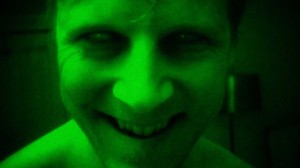 With multiple locations in the script, Jung shot some of the film’s single-scene locations material first then set up in main house. “It was nice that we had eased ourselves into the movie,” he said. “We shot all of our traveling stuff in the first half and we ended in the house where things tend to get dark and the whole end of the movie takes place. The really dark stuff comes towards the end. It was tough for Shane. He would come in, and he would have to go from the beginning of the movie to a scene towards the end of the movie. We would talk about where we were in the story. These are the things happening in your head. We had a decent amount of prep time before we started shooting where we familiarized ourselves with the script and his character. When you don’t have a tremendous amount of time, it’s important that everyone be on the same page.”
With multiple locations in the script, Jung shot some of the film’s single-scene locations material first then set up in main house. “It was nice that we had eased ourselves into the movie,” he said. “We shot all of our traveling stuff in the first half and we ended in the house where things tend to get dark and the whole end of the movie takes place. The really dark stuff comes towards the end. It was tough for Shane. He would come in, and he would have to go from the beginning of the movie to a scene towards the end of the movie. We would talk about where we were in the story. These are the things happening in your head. We had a decent amount of prep time before we started shooting where we familiarized ourselves with the script and his character. When you don’t have a tremendous amount of time, it’s important that everyone be on the same page.”
Well aware of the film resting on the shoulders of his lead actor, Jung worked closely with Johnson. “The movie was the Shane show. He’s in every single moment of this movie,” Jung confessed. “It had to be strenuous for him. Towards the end, a lot of it gets very physical. Shane’s become a very good friend of mine. ‘I love this character, let’s explore the limits of all of this stuff.’ Because of time constraints, I would need him to do something completely different and he impressed me in every single way. Shane said, ‘I want to play this guy like the guy you would want to have a beer with – some typical dude that you’d be friends with who had a sarcastic wit to him.’ That’s exactly the way I wrote the character. He really does that justice. You watch this movie on a big screen, and the first half of the movie, everybody is laughing, and around the middle of the movie, you could hear a pin drop. You can feel the tension in the air, and it just gets darker and darker. You feel for him emotionally.”
With his movie in the can with a summer 2014 release already established, Jung set about setting up his next project. “You realize how long it takes to get a movie off the ground, and you don’t know when your next one will be,” he said. “I really want to be shooting another movie. If you are Ridley Scott or Tim Burton, you’re booked. For a lot of these guys, you don’t have another movie for two or three years. I’m negotiating now to adapt a book, The King of Sting, a Catch Me If You Can-type story. I have a dark thriller along the lines of this movie – ROAM – Rider of Another Mortal. What if you could hijack somebody else’s body and take it for a ride? It’s a dark creepy movie. I’ve finished the script for it, and we are going to start storyboarding.”
As The Possession of Michael King spills out into theaters and eventually onto home video, Jung hopes it connects with the new breed of horror audience member. “It’s a psychological horror film about a man’s descent into madness and his quest for truth about the supernatural,” Jung explained.
He added a final thought before heading to his film’s Los Angeles premiere. “Hopefully, we’ve managed to do things a little bit different than any thing that you’ve have seen before.”





